Science
Beyond paradigms — III
Editor’s note
Einstein failed to validate his own 'unified field theory' with a single mathematical equation that would describe the movements of both planets and atoms, but the Mother's spiritual experience validated the same theory in terms of consciousness. Her description of experiencing a great undulating wave of consciousness, expanding and contracting in a vast, calm and harmonious rhythm, opens the possibility of a poise of consciousness where one is capable of 'being' at every point in the universe. Science today needs a paradigm shift to a poise centred in consciousness.
According to our window of vision we have three kinds of sciences:
Science of many appearances
In our present-day science, this deals with name, form, quality, size, measure, weight, properties of each individual element in isolation with the rest. As a next step, one seeks to discover the relation of each element to another, generally in close proximity to each other. A third step is to see how each individual element relates to the distant elements. Finally, there is a fourth step where we try to fathom the relation or interaction of each element upon the cosmic whole and vice versa. It is this last step that can carry us beyond the frontiers of human thought to something that can be regarded as a real breakthrough.
Let’s consider an example of these steps taking the human body. Thus, the first step here is to study each cell type and organ in isolation, the next step is to see how these organs are interconnected with each other; what physiological systems serve as a bridge and hold them together in a dynamic interchange. Much of our medical science bases itself on these two steps and often stops there. Even when it studies the environment, it studies only those elements of a physical nature and in close proximity to the human organism, such as the weather, food, the immediate flora and fauna, etc. A third step, yet to be taken however, would be to examine how a nuclear experiment in distant Arizona affects the fertility rate of European nations or creates changing patterns of weather and disease in south-east Asia. It is undoubtedly very difficult to study such things using our present-day statistical model which are mostly limited to study brief temporal links of ‘seemingly’ obvious causes, though experiments have started in this direction leading to interesting discoveries.
Finally, the fourth step would be to study the effects of the motion of distant stars and galaxies upon the human body. It may be noted here that astrology which tried to study such effects (and is now reduced to a mere mass of superstitions) is, in its essence, not about how particular planetary alignments affect our earthly conditions. The planetary alignments are only signatures that indicate a larger cosmic drift. Therefore, astrology, in its origin, was a study of the way various patterns of cosmic arrangements affect individual life upon earth. The method, devised to correct these effects (when harmful) was based on an occult knowledge that, behind gross phenomena, there are subtle forces and powers at work and so on to subtler and subtler energies until one discovers the one power that is behind the motion of the stars, the power that also conceals in us the atoms and drives all movements and dynamisms whether on earth or elsewhere, whether in man or bird or beast, whether in this material world or the subtle worlds of gods and titans and other agencies hidden to our ordinary mortal senses. No doubt, this vast and profound science has now fallen into the wrong hands and for one genuine person in this field we might encounter ten charlatans. Yet the potential is there waiting for its hour of discovery.
That takes us to the second kind of science, an offshoot of another extreme effort.
Science of one Reality
Also known loosely as ‘spiritual science’, in general, it disregards the entire range of phenomenal world or worlds, gross or subtle, and seeks to use the human body as a pedestal to take a flight into the ‘one’ Reality underlying everything. In the long exploration made by human beings through an extreme inner effort it has arrived at its own set of interesting discoveries. These discoveries carry their own empirical validity as they cut across barriers of time, geographical space and external differences between human beings.
According to this science, the material world and subtle worlds are the result of a projection or an exteriorisation of the one Self. It is like a shadow that is the projection of the person. But for the person, the shadow would not exist. In itself, the shadow is only a poor caricature, a distorted silhouette of the person. So to this world, our physical bodies are like the shadow of the cosmic spirit and the individual soul. Not only the material world but also the subtle worlds of thoughts and feelings are also shadows, albeit slightly brighter, like the aura around a person. Their only function is to make us ponder about who is the ‘person’ whose shadow or aura it is. Instead we are engaged with studying the shadow and trying to correct its distortions by our concepts of what it should be. But thought itself is only a brilliant shadow. The spiritual man therefore stops struggling and fighting with the shadow or bothering himself about ever-changing appearances, whether they look ‘good’ or ‘bad’ to his mind. Indifferent to health and disease, to good and bad, he cuts the cord of the sensory-mind that chains us to the shadow and binds us to appearances. His mind thus ‘freed’ automatically rises up to its ‘source’ and goes back sailing like a bird or an aeroplane to the ‘one’ and the ‘infinite’ out of which it is born.
This science concerns itself only with those physio-psychological methods that help us achieve this ‘freedom’. Its one goal is to cut a window or find the concealed doors within the human organism through which it can glimpse and escape into the ‘boundless’. These doors are often called cakras or vortex of energies that connect the soul to the physical sensory world and ‘trick’ us into ‘believing’ that we are this mortal body and this struggling creature: death-hunted, sense-bound and mind- tainted. The aim of realising the ‘one’ achieved, the rest is discarded as a useless encumbrance awaiting its final dissolution through death!
Science of the future
As we can see, both the above mentioned sciences have their own place but neither is able to satisfy us completely. The first type of science is very useful from a practical point of view. Take the example of a car mechanic. His concern is to design, produce and fix a car. But it is neither his concern nor is it possible for him to know as to what purpose the car will serve for its owner and whether he shall drive it. Thus proceeding, the first type of scientist develops a philosophy wherein he regards the creator, if any, as a blind car-maker. The role of the scientist is to study and fix it or else to even improve upon it. Man, in this view is higher than the creator himself and creation is a blind purposeless act driven by a chance play of forces that has developed into law and mechanism. It leaves us little choice beyond accepting a fait accompli wherein we accept this brief, absurd existence almost helplessly and try to make the most out of it for our individual or collective ‘selfish’ good, for survival, for utility, for comfort!
The second science, on the other hand, takes us to another extreme. It gives hope of an exit, a narrow door of escape out of this tumult and trouble, to seek solace in something beyond. In this view, we go to the doctor for the care of our body; to the saint for the care of our soul and peace of mind.
The science of the future must reconcile this seeming antagonism. This new science, which is already emerging, is beginning to discover the connecting links and bridges between the ‘One Reality’, call it Spirit or God or Creator or simply ‘That’ (or any other name) and the world of many appearances in which we live or which we are conscious of at present. This will happen when the yogn and scientist come together in a single person. Discarding either extreme, using instead the discoveries from both kinds of human effort, it will break free from the limited boundaries of paradigm.
The essential features of this new science will be considered next.
(To be continued)
Dr. Alok Pandey is a doctor practising at the Sri Aurobindo Ashram.
Share with us (Comments, contributions, opinions)
When reproducing this feature, please credit NAMAH, and give the byline. Please send us cuttings.
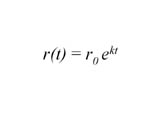
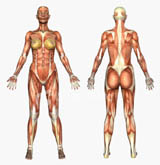
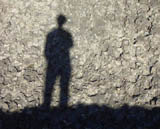 A shadow
A shadow
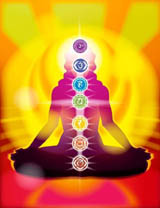 Cakras
Cakras
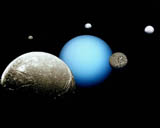 Science of the future
Science of the future